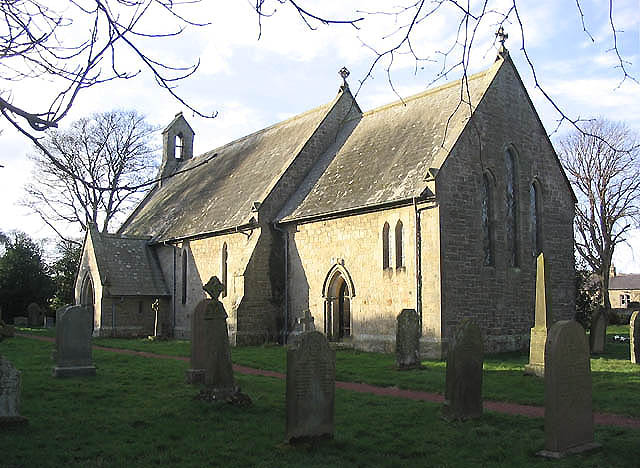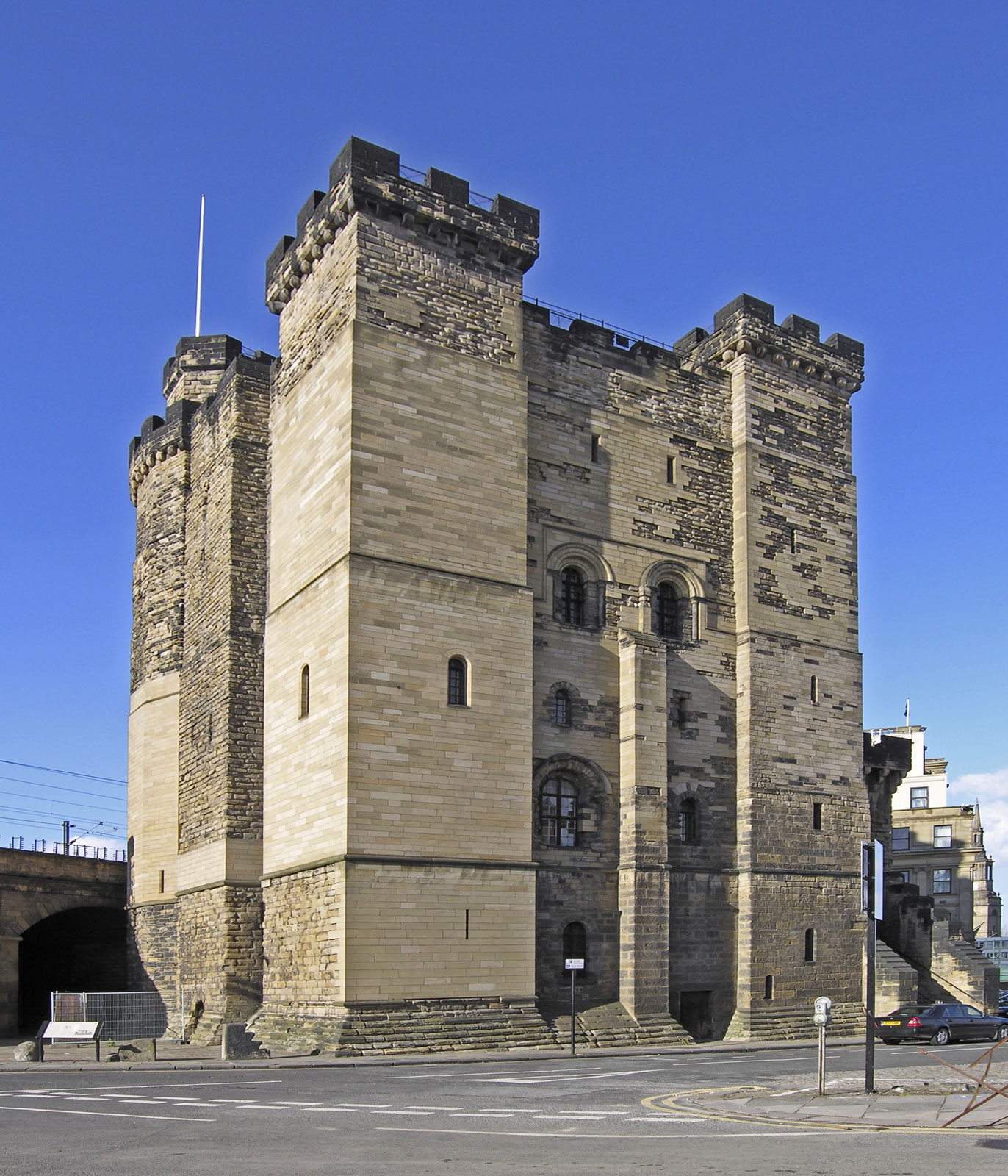|
Eglingham
Eglingham is a village in Northumberland, England, situated about north-west of Alnwick and from Wooler. It lies in the sheltered valley of the Eglingham Burn, a tributary of the River Aln, about above sea level, in a rural conservation area set amongst rolling countryside, within of the Cheviot Hills. The village is surrounded by mainly arable farmland, moorland and woodland, including an arboretum and some commercial forestry. The village has about 60 dwellings and a population of about 100, most situated either side of the through-road, and including the local manorial property, Eglingham Hall. Eglingham is also a parish, about nine miles (14 km) in length by four and a half in breadth, with an area of . It comprises 2 villages: South Charlton and Eglingham; and 4 settlements – Bassington, Ditchburn, Harehope, Shipley – and several smaller places. The River Breamish, which rises in the Cheviots, runs through the parish. The geological composition of the ... [...More Info...] [...Related Items...] OR: [Wikipedia] [Google] [Baidu] |
Eglingham Hall
Eglingham Hall () is a former mansion house and a Grade II* listed building situated at Eglingham, near Alnwick, Northumberland. The manor of Eglingham was acquired by Henry Ogle, a nephew of Robert, 1st Baron Ogle of Ogle in 1514. Luke Ogle (1510–1597) built a new mansion house on the site of a pele tower. The Ogle family of Eglingham were parliamentarian during the English Civil War. Henry Ogle (1600–1669), Deputy Lieutenant of Northumberland in 1644, was the representative for the county in the parliaments of 1653 and 1654. His son John (1621–1686) was Commissioner for the Commonwealth in 1650 and High Sheriff of Northumberland in 1654. It is said that Oliver Cromwell was a guest at Eglingham in 1650. The Hall was rebuilt in grander style for Robert Ogle in 1728, to a design including a seven-bay façade possibly by architect William Wakefield. Nikolaus Pevsner noted that the rusticated quoins and doorway of Eglingham Hall showed the influence of Seaton Delaval Hall, ... [...More Info...] [...Related Items...] OR: [Wikipedia] [Google] [Baidu] |
Bassington
Bassington is a former civil parish, now in the parish of Eglingham, in the county of Northumberland, England. It is located about northwest of Alnwick. Bassington is traversed by the River Aln. In 1951 the parish had a population of 2. Governance Bassington is in the parliamentary constituency of Berwick-upon-Tweed. Bassington was formerly a township A township is a kind of human settlement or administrative subdivision, with its meaning varying in different countries. Although the term is occasionally associated with an urban area, that tends to be an exception to the rule. In Australia, C ... in Eglingham parish, from 1866 Bassington was a civil parish in its own right until it was abolished on 1 April 1955 and merged with Eglingham. References Former civil parishes in Northumberland Eglingham {{Northumberland-geo-stub ... [...More Info...] [...Related Items...] OR: [Wikipedia] [Google] [Baidu] |
South Charlton
South Charlton is a small village and former civil parish, now in the parish of Eglingham, in the English county of Northumberland, north-west of Alnwick. In 1951 the parish had a population of 82. The parish church of St. James, South Charlton was built in 1862 by James Deason of London for the 4th Duke of Northumberland, in an Early English style. It is a Grade II listed building. Two miles (3.2 km) south-east of the village, on the slopes of Heifer Law, is Heiferlaw Tower, a ruined fifteenth-century pele tower built by the monks of Alnwick Abbey. Governance South Charlton was formerly a township and chapelry A chapelry was a subdivision of an ecclesiastical parish in England and parts of Lowland Scotland up to the mid 19th century. Status It had a similar status to a township but was so named as it had a chapel of ease (chapel) which was the com ... in Ellingham parish, from 1866 South Charlton was a civil parish in its own right until it was abolished ... [...More Info...] [...Related Items...] OR: [Wikipedia] [Google] [Baidu] |
Northumberland
Northumberland () is a ceremonial counties of England, county in Northern England, one of two counties in England which border with Scotland. Notable landmarks in the county include Alnwick Castle, Bamburgh Castle, Hadrian's Wall and Hexham Abbey. It is bordered by land on three sides; by the Scottish Borders, Scottish Borders region to the north, County Durham and Tyne and Wear to the south, and Cumbria to the west. The fourth side is the North Sea, with a stretch of coastline to the east. A predominantly rural area, rural county with a landscape of moorland and farmland, a large area is part of Northumberland National Park. The area has been the site of a number of historic Anglo-Scottish wars, battles with Scotland. Name The name of Northumberland is recorded as ''norð hẏmbra land'' in the Anglo-Saxon Chronicle, meaning "the land north of the Humber". The name of the kingdom of ''Northumbria'' derives from the Old English meaning "the people or province north of th ... [...More Info...] [...Related Items...] OR: [Wikipedia] [Google] [Baidu] |
Newcastle Upon Tyne
Newcastle upon Tyne ( RP: , ), or simply Newcastle, is a city and metropolitan borough in Tyne and Wear, England. The city is located on the River Tyne's northern bank and forms the largest part of the Tyneside built-up area. Newcastle is also the most populous city of North East England. Newcastle developed around a Roman settlement called Pons Aelius and the settlement later took the name of a castle built in 1080 by William the Conqueror's eldest son, Robert Curthose. Historically, the city’s economy was dependent on its port and in particular, its status as one of the world's largest ship building and repair centres. Today, the city's economy is diverse with major economic output in science, finance, retail, education, tourism, and nightlife. Newcastle is one of the UK Core Cities, as well as part of the Eurocities network. Famous landmarks in Newcastle include the Tyne Bridge; the Swing Bridge; Newcastle Castle; St Thomas’ Church; Grainger Town includin ... [...More Info...] [...Related Items...] OR: [Wikipedia] [Google] [Baidu] |
Neolithic
The Neolithic period, or New Stone Age, is an Old World archaeological period and the final division of the Stone Age. It saw the Neolithic Revolution, a wide-ranging set of developments that appear to have arisen independently in several parts of the world. This "Neolithic package" included the introduction of farming, domestication of animals, and change from a hunter-gatherer lifestyle to one of settlement. It began about 12,000 years ago when farming appeared in the Epipalaeolithic Near East, and later in other parts of the world. The Neolithic lasted in the Near East until the transitional period of the Chalcolithic (Copper Age) from about 6,500 years ago (4500 BC), marked by the development of metallurgy, leading up to the Bronze Age and Iron Age. In other places the Neolithic followed the Mesolithic (Middle Stone Age) and then lasted until later. In Ancient Egypt, the Neolithic lasted until the Protodynastic period, 3150 BC.Karin Sowada and Peter Grave. Egypt in ... [...More Info...] [...Related Items...] OR: [Wikipedia] [Google] [Baidu] |
Bronze Age
The Bronze Age is a historic period, lasting approximately from 3300 BC to 1200 BC, characterized by the use of bronze, the presence of writing in some areas, and other early features of urban civilization. The Bronze Age is the second principal period of the three-age system proposed in 1836 by Christian Jürgensen Thomsen for classifying and studying ancient societies and history. An ancient civilization is deemed to be part of the Bronze Age because it either produced bronze by smelting its own copper and alloying it with tin, arsenic, or other metals, or traded other items for bronze from production areas elsewhere. Bronze is harder and more durable than the other metals available at the time, allowing Bronze Age civilizations to gain a technological advantage. While terrestrial iron is naturally abundant, the higher temperature required for smelting, , in addition to the greater difficulty of working with the metal, placed it out of reach of common use until th ... [...More Info...] [...Related Items...] OR: [Wikipedia] [Google] [Baidu] |
Iron Age
The Iron Age is the final epoch of the three-age division of the prehistory and protohistory of humanity. It was preceded by the Stone Age (Paleolithic, Mesolithic, Neolithic) and the Bronze Age (Chalcolithic). The concept has been mostly applied to Iron Age Europe and the Ancient Near East, but also, by analogy, to other parts of the Old World. The duration of the Iron Age varies depending on the region under consideration. It is defined by archaeological convention. The "Iron Age" begins locally when the production of iron or steel has advanced to the point where iron tools and weapons replace their bronze equivalents in common use. In the Ancient Near East, this transition took place in the wake of the Bronze Age collapse, in the 12th century BC. The technology soon spread throughout the Mediterranean Basin region and to South Asia ( Iron Age in India) between the 12th and 11th century BC. Its further spread to Central Asia, Eastern Europe, and Central Europe is somewhat ... [...More Info...] [...Related Items...] OR: [Wikipedia] [Google] [Baidu] |
.jpg)




